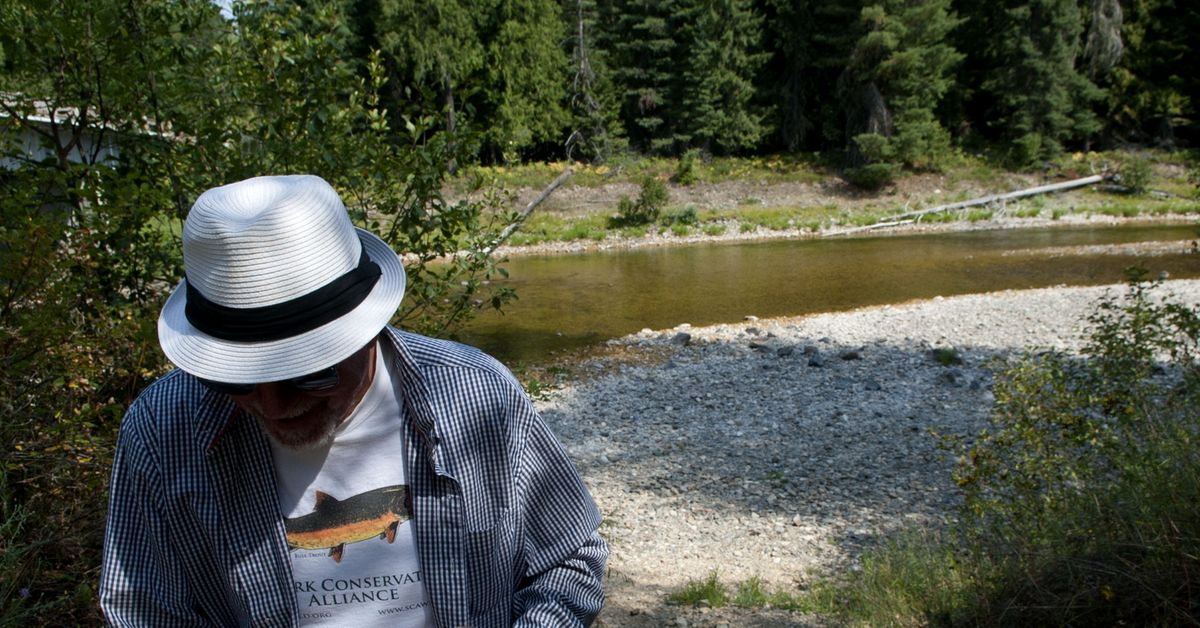Flow cut out of Priest Lake sparks worry about river’s health

Drought conditions are creating conflicts at Priest Lake.
The mountain lake is one of North Idaho’s top resort destinations, drawing people from all over the region for fishing, boating and camping. But this year, there’s not enough water to keep Priest Lake at full pool for recreation, while still allowing a healthy outflow to support downstream fish habitat in Priest River.
The Idaho Department of Water Resources recently cut the amount of water flowing through Priest Lake’s outlet dam into the river by half. The reduced flow is helping the department comply with a state statute to keep high summer lake levels to support tourism, but the move is drying up the river.
On Monday, kayakers paddled on the lake above the outlet dam, while kids explored the rocky, barren stretch of riverbed below the dam.
“We’re in a big bind,” said Liz Cresto, the department’s hydrology section supervisor. “We don’t take these issues lightly. It weighs heavily on (Gary Spackman) the director.”
Lake levels are a contentious issue. Last month, the Department of Water Resources sent out an advisory, alerting Priest Lake property owners that flows into the lake were extremely low, and encouraging boat owners to monitor lake levels.
“It created a panic situation,” said Craig Hill, owner of Hill’s Resort at Priest Lake.
Boat owners were afraid of rapid lake drawdowns. About 150 people showed up at a community meeting in late July, where Department of Water Resources employees affirmed the department’s commitment to keeping Priest Lake at or near the full pool outlined in the state statute.
After the meeting, Spackman – the director – decided to cut the lake’s outflow from 60 cubic feet per second to 30 cubic feet per second.
Hill credits department officials for looking out for community interests during a difficult water year. Lake levels do matter to tourism and recreation, he said. If Priest Lake dropped a couple of feet, people would have trouble accessing docks and marinas in the shallower bays, as well as some of the lake’s popular beaches, he said.
But Mark Kabush, who lives near Nordman, said he’s dismayed that river flows are being sacrificed to keep lake levels high.
Priest River is home to bull trout, westslope cutthroat trout, and other native and sport fish. During an extreme drought year, like this one, there should be an effort to balance the need for water in the river with lake recreation, Kabush said.
“The people on the lake seem to want to shut the river down. They don’t want to give at all,” said Kabush, who is a board member of Selkirk Conservation Alliance but said those views are his own.
Chip Corsi, the Idaho Department of Fish and Game’s regional director, said it’s difficult to measure the impact of low flows on fish, particularly bull trout.
Priest River typically gets very warm in the summer months, which limits the number of fish in the river.
Fish and Game studies indicate that bull trout, which are federally protected, migrate up a tributary stream in June in search of colder water.
In late September or October, the bull trout move back into Priest River as part of a migration to the Pend Oreille River or Lake Pend Oreille.
“They’re not really using the river right now,” Corsi said. “But if we continue with these drought conditions into September and October, they’ll face some pretty tough conditions.”
The Idaho statute says Priest Lake must be kept at full pool during the main recreational season. The season’s length isn’t defined in the statute, but it has traditionally ended between Oct. 1 and Nov. 30, said Cresto, the hydrology supervisor.
Last week, state employees worked with the U.S. Geological Survey to get a better grasp of Priest Lake’s hydrology, including more precise measurements of inflows into the lake and evaporation rates. The information will help the department evaluate how much water should be released from the lake, Cresto said.
Meanwhile, “we sure hope for rain,” she said.